Top 10 Most Dangerous Cities in Virginia in 2024
Virginia, with its proximity to Washington D.C., scenic beaches, and majestic mountains, attracts residents and visitors looking for a blend of history, natural beauty, and urban amenities. However, amidst its charm, certain regions face significant challenges with crime. Whether you're planning a move or a visit, knowing which neighborhoods to avoid is important. To help you make informed decisions, we've compiled a list of the ten cities in Virginia with the highest rates of violent and property crimes.
Methodology
To determine the most dangerous cities in Virginia, we referred the most recent FBI crime data focusing on the following criteria:
- Crime Rate: The total reported incidents of crime per 100,000 residents.
- Violent Crime Rate: Incidents such as murder, assault, robbery, and rape per 100,000 residents.
- Property Crime Rate: Incidents like burglary, theft, and vehicle theft per 100,000 residents.
- Population Size: The size of each city's population, as larger populations may correlate with higher absolute numbers of reported crimes.
- Income Levels: While not a direct crime statistic, income levels can influence crime rates indirectly.
Sources included the latest FBI crime reports and additional data from reputable sources such as Saturday Night Science. We focused on cities with a population of at least 5,000 to ensure statistical relevance and accuracy.
Top 10 Most Dangerous Cities in Virginia
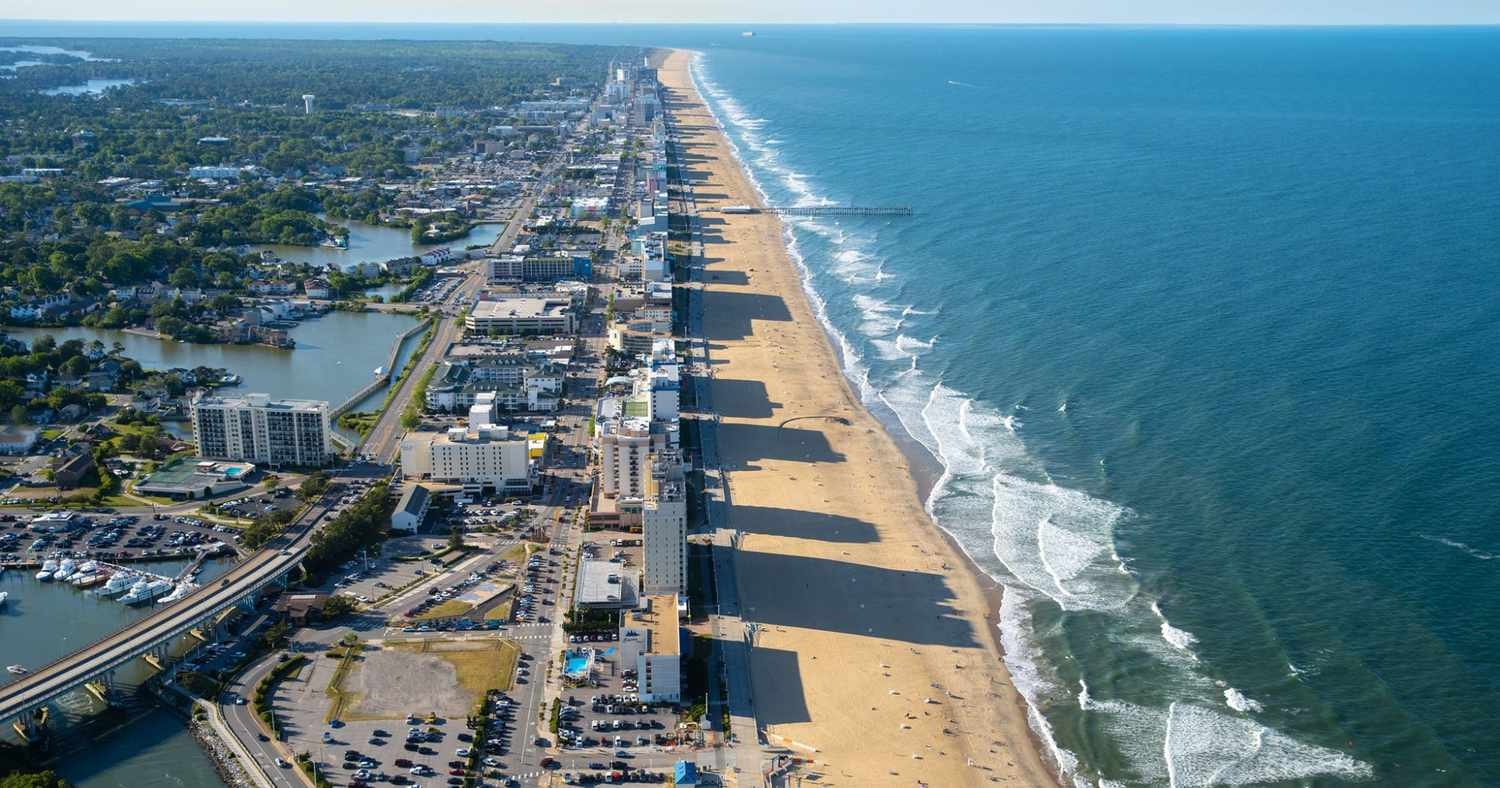
Which Virginia city tops the list as the most dangerous place to live in 2024? According to FBI data, Portsmouth has the highest crime rates in the state. This highlights ongoing safety challenges in urban areas across Virginia. Check out the full list below:
10. Newport News
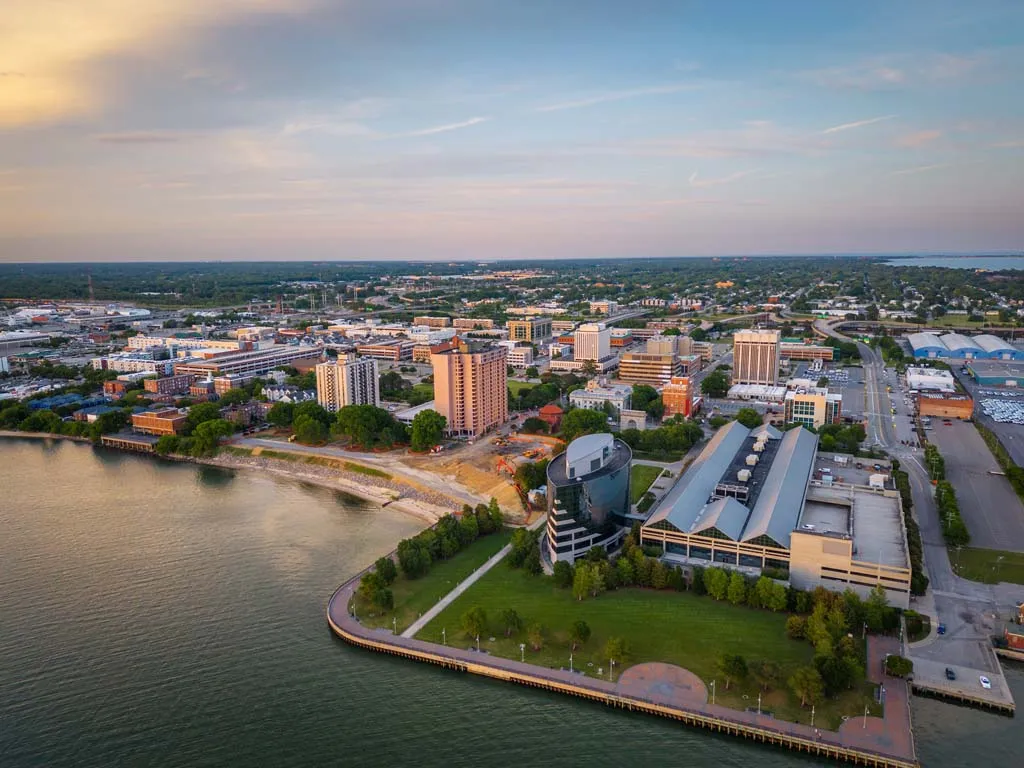
- Population: 183,903
- Total Reported Crimes: 5,354
- Overall Crime Rate: 2,911.3
- Violent Crime Rate: 609.6
- Property Crime Rate: 2,301.8
Newport News, situated on Virginia's southeastern coast, faces notable challenges regarding crimes , both violent and property-related. In the most recent reporting year, the city recorded 1,121 violent crimes, equating to a rate of 609.6 per 100,000 people, significantly surpassing the national average by 64.84%. Residents face a 1 in 164.1 chance of experiencing a crime annually, considerably higher than Virginia's average of 1 in 479.3.
Property crimes also pose a concern, with Newport News reporting 4,233 incidents, translating to a rate of 2,301.8 per 100,000 people. This rate exceeds the national average by 17.77% and Virginia's by 58.04%, indicating a higher risk of property-related incidents compared to both state and national norms.
9. Farmville
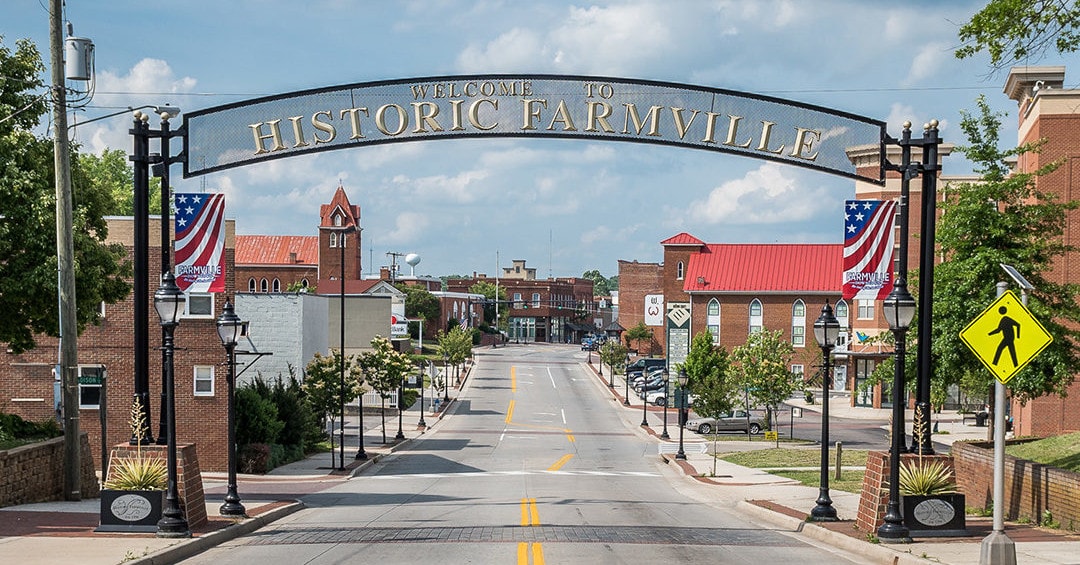
- Population: 7,647
- Total Reported Crimes: 245
- Overall Crime Rate: 3,395.2
- Violent Crime Rate: 457.3
- Property Crime Rate: 2,937.9
Farmville, nestled in central Virginia, presents a contrasting picture in terms of crime compared to larger cities like Newport News. In the latest reporting year, the town of Farmville reported 33 violent crimes, resulting in a rate of 457.3 per 100,000 people. This rate indicates a 23.67% higher chance of violent crime compared to the national average. Residents face a 1 in 218.7 chance of being victims of violent acts annually, higher than state's average of 1 in 479.3, which makes Farmville one of the most dangerous cities in Virginia.
Property crime remains a significant concern in Farmville, with the town reporting 212 incidents, translating to a rate of 2,937.9 per 100,000 people. This rate exceeds the national average by 50.32% and Virginia's average by 101.72%. It indicates a higher risk of property-related incidents compared to both state and national norms.
8. Franklin

- Population: 8,403
- Total Reported Crimes: 302
- Overall Crime Rate: 3,642.1
- Violent Crime Rate: 518.6
- Property Crime Rate: 3,123.5
Another dangerous city in our list is Franklin. Located in southeastern Virginia, it faces significant challenges related to crime percentage based on recent data. In the last reporting year, the city recorded 43 violent crimes, resulting in a rate of 518.6 per 100,000 people. This rate is 40.23% higher than the national average, indicating an increased risk of violent crime compared to national norms. Residents of Franklin have a 1 in 192.8 chance of experiencing a crime annually, significantly higher than Virginia's average of 1 in 479.3.
Property crime also poses a concern, with Franklin reporting 259 incidents, translating to a rate of 3,123.5 per 100,000 people. This rate exceeds the national average by 59.82% and Virginia's average by 114.46%, suggesting a heightened risk of property-related incidents compared to state and national levels.
7. Petersburg
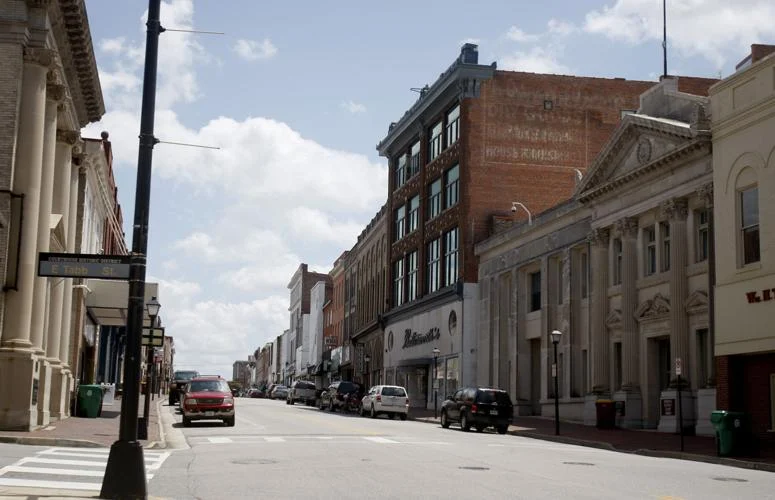
- Population: 33,261
- Total Reported Crimes: 1,130
- Overall Crime Rate: 3,368.5
- Violent Crime Rate: 813.8
- Property Crime Rate: 2,554.7
Petersburg, a city with a rich historical background, faces significant crime-related challenges. In the most recent reporting year, the city recorded 273 violent crimes, resulting in a rate of 813.8 per 100,000 people. This rate is 120.07% higher than the national average, indicating a substantial risk of violent crime compared to the national norms. Residents of Petersburg have a 1 in 122.9 chance of experiencing an act of violence annually, significantly higher than Virginia's average of 1 in 479.3.
Property crimes are also a notable issue in Petersburg, with 857 incidents reported, translating to a rate of 2,554.7 per 100,000 people. This rate exceeds the national average by 30.72% and Virginia's average by 75.41%, suggesting a heightened risk of property-related incidents compared to both state and national levels.
6. Emporia
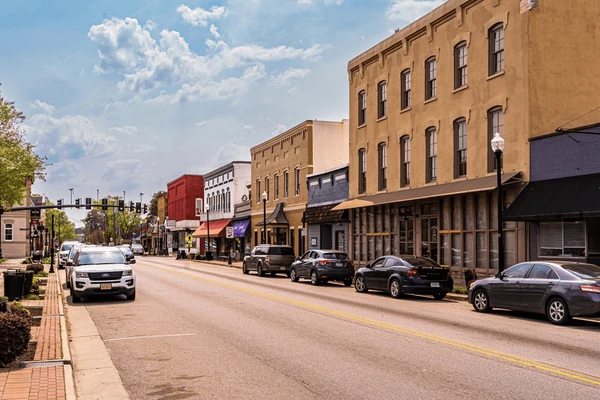
- Population: 5,680
- Total Reported Crimes: 224
- Overall Crime Rate: 3,973.7
- Violent Crime Rate: 443.5
- Property Crime Rate: 3,530.2
Emporia, a small city in Virginia, faces significant crime challenges relative to its size. In the most recent reporting year, Emporia recorded 25 violent crimes, equating to a rate of 443.5 per 100,000 people. This rate is 19.93% higher than the national average, indicating a substantial risk of a crime compared to national norms. Residents have a 1 in 225.5 chance of experiencing a violent crime annually, which is notably higher than Virginia's average of 1 in 479.3.
Property crimes are particularly prevalent in Emporia, with 199 incidents reported, translating to a rate of 3,530.2 per 100,000 people. This rate is 80.63% higher than the national average and 142.39% higher than Virginia's average, reflecting a significant risk of property-related incidents compared to both state and national levels.
5. Fredericksburg
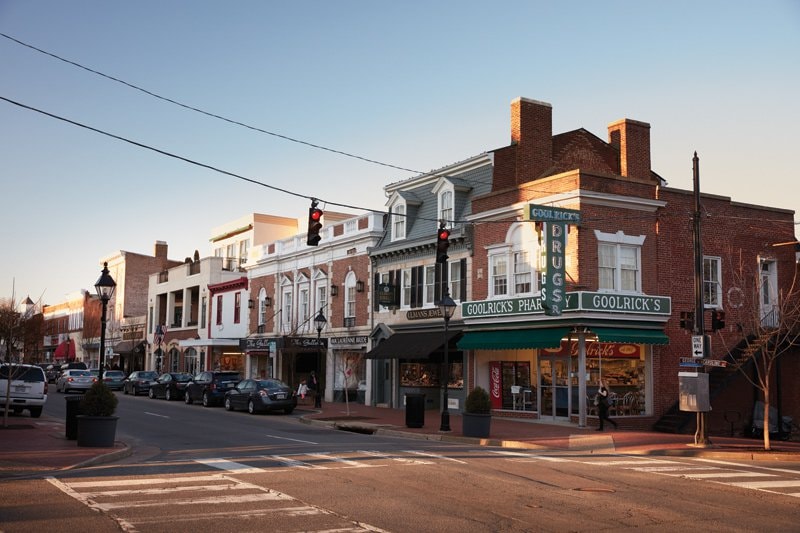
- Population: 28,258
- Total Reported Crimes: 1,265
- Overall Crime Rate: 4,385.7
- Violent Crime Rate: 412.6
- Property Crime Rate: 3,973.1
Fredericksburg, a historic city in Virginia, faces significant crime challenges. In the most recent reporting year, Fredericksburg recorded 119 violent crimes, equating to a rate of 412.6 per 100,000 people. This rate is 11.56% higher than the national average, indicating a higher risk of violent crime compared to national norms. Residents have a 1 in 242.4 chance of experiencing violent acts annually, which is notably higher than the Virginia state average of 1 in 479.3.
Property crimes are particularly prevalent in Fredericksburg, with 1,146 incidents reported, translating to a rate of 3,973.1 per 100,000 people. This rate is 103.29% higher than the national average and 172.80% higher than Virginia's average, reflecting a significant risk of property-related incidents compared to both state and national levels.
4. Charlottesville

- Population: 46,289
- Total Reported Crimes: 1,782
- Overall Crime Rate: 3,952.2
- Violent Crime Rate: 541.2
- Property Crime Rate: 3,411.0
Charlottesville, a vibrant city known for its rich history and cultural significance, has a notable crime rate. In the most recent reporting year, Charlottesville recorded 244 violent crimes, resulting in a rate of 541.2 per 100,000 people. This rate is 46.34% above the national average, highlighting a higher incidence of violent crime compared to other parts of the country. Residents face a 1 in 184.8 chance of becoming a victim of violent offence annually, which is significantly higher than Virginia's average of 1 in 479.3.
Property crimes are also prevalent in Charlottesville, with 1,538 incidents reported. This translates to a rate of 3,411.0 per 100,000 people, which is 74.53% higher than the national average and 134.21% higher than Virginia's average. The high property crime rate indicates a considerable risk of property-related incidents compared to both state and national levels.
3. Roanoke
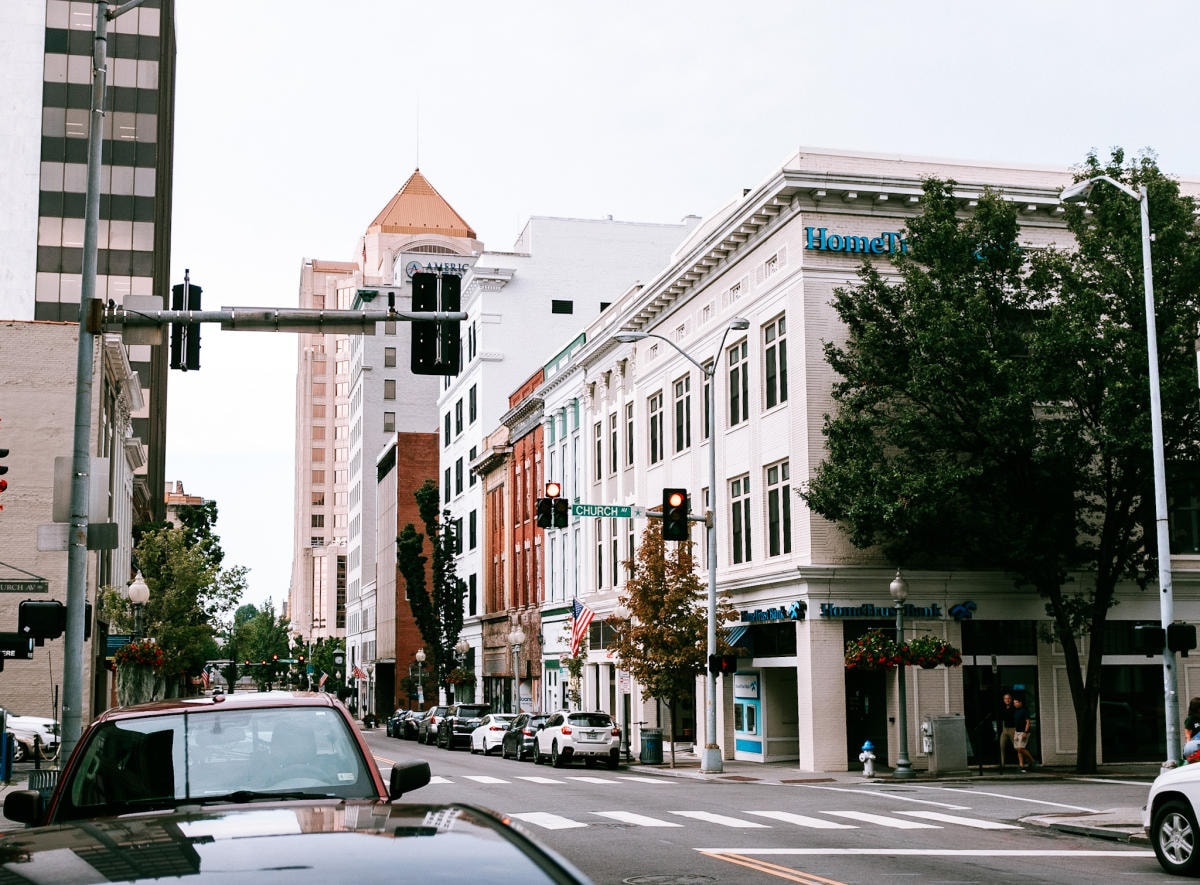
- Population: 99,213
- Total Reported Crimes: 4,806
- Overall Crime Rate: 4,893.9 per 100,000 people
- Violent Crime Rate: 604.9 per 100,000 people
- Property Crime Rate: 4,289.0 per 100,000 people
Roanoke, a city situated in the heart of the Blue Ridge Mountains, faces significant crime challenges. In the most recent reporting year, Roanoke experienced 594 violent crimes, leading to a rate of 604.9 per 100,000 people. This rate is 63.56% above the national average, marking a substantial risk of violent crime for residents. With a 1 in 165.3 chance of being a victim of violent crime annually, Roanoke's rate is significantly higher than Virginia's average of 1 in 479.3.
Property crimes are even more prevalent in Roanoke, with 4,212 incidents reported. This results in a rate of 4,289.0 per 100,000 people, which is 119.46% higher than the national average and 194.49% higher than Virginia's average. The high property crime rate makes it one of the most dangerous places in the state.
2. Norfolk
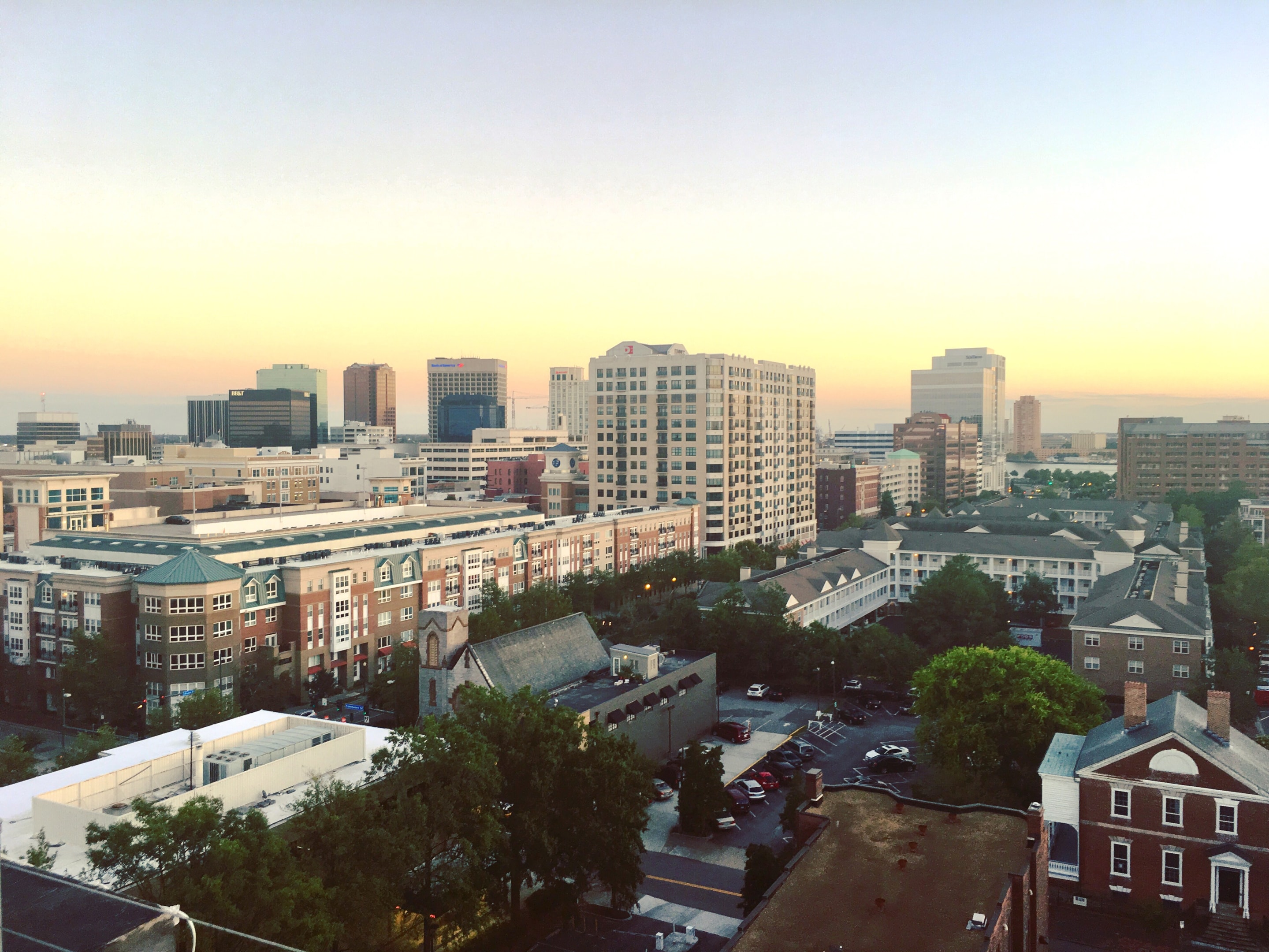
- Population: 236,973
- Total Reported Crimes: 13,012
- Overall Crime Rate: 5,574.5 per 100,000 people
- Violent Crime Rate: 702.6 per 100,000 people
- Property Crime Rate: 4,871.9 per 100,000 people
Norfolk, Virginia's most populous city, struggles significantly with high crime rates. In the latest reporting year, Norfolk experienced 1,640 violent crimes, resulting in a rate of 702.6 per 100,000 people and making it one of the most dangerous cities in Virginia. This rate is 89.99% higher than the national average, indicating a substantial threat to personal safety for residents. With a 1 in 142.3 chance of becoming a victim of violent crime annually, Norfolk's rate is significantly higher than the Virginia average of 1 in 479.3.
Property crimes are even more prevalent in Norfolk, with 11,372 incidents reported. This results in a rate of 4,871.9 per 100,000 people, which is 149.28% higher than the national average and 234.52% higher than Virginia's average. The high property crime rate signifies a substantial threat to property and possessions, compared to both state and national levels, which makes Norfolk one of the most dangerous cities in Virginia.
1. Portsmouth

- Population: 97,384
- Total Reported Crimes: 5,642
- Overall Crime Rate: 5,757.0 per 100,000 people
- Violent Crime Rate: 875.5 per 100,000 people
- Property Crime Rate: 4,881.5 per 100,000 people
Portsmouth faces significant challenges with high crime rates, making it Virginia's most dangerous city in the past couple of years. In the latest reporting year, Portsmouth experienced 858 violent crimes, resulting in a rate of 875.5 per 100,000 people. This rate is 136.75% higher than the national average, suggesting a substantial risk to personal safety. Residents have a 1 in 114.2 chance of becoming a victim of a crime annually, compared to a 1 in 479.3 chance statewide.
Property crimes are equally concerning, with 4,784 incidents reported including motor vehicle theft and burglary. This results in a rate of 4,881.5 per 100,000 people, which is 149.77% higher than the national average and 235.17% higher than Virginia's average. The high property crime rate indicates a significant threat to property and possessions.
Recent Efforts to Improve Safety in Virginia
Virginia has implemented various initiatives and strategies to address high crime rates, emphasizing community involvement and systematic approaches to crime prevention. Below is a summary of recent efforts by Virginia cities and law enforcement agencies:
Crime Prevention Strategies and Programs
1. Community Crime Prevention Units
Virginia law enforcement agencies have established dedicated crime prevention units. These units consist of highly trained crime prevention practitioners who collaborate with citizens and business leaders to implement effective crime prevention strategies. The shift towards community-oriented policing has further amplified the role of these practitioners, making community engagement a central aspect of crime prevention efforts.
2. Certified Crime Prevention Specialist Program
To ensure high standards in crime prevention, Virginia has introduced a certification program for crime prevention specialists. This program provides guidelines and training for individuals seeking certification, promoting a cadre of professionals dedicated to enhancing community safety.
Certification Applications:
- Initial Certification: Crime Prevention Specialist Certification Application (Form A)
- Recertification: Crime Prevention Specialist Recertification Application (Form B)
3. Certified Crime Prevention Community Program (CCPCP)
Launched in 2000 by the Department of Criminal Justice Services (DCJS), the CCPCP recognizes localities that implement comprehensive community safety strategies. To achieve certification, localities must meet 12 core community safety programs and standards, supplemented by a minimum of seven optional programs. This certification helps enhance local economic development and tourism by showcasing the community’s commitment to safety and professionalism.
4. Certified Crime Prevention Campus Program (CCP-CP)
Aimed at institutions of higher learning, the CCP-CP certifies colleges and universities that have established comprehensive campus safety strategies. Applicants must implement core campus safety elements and select additional optional elements to achieve certification. This program ensures that educational institutions maintain high standards of safety and security.
Currently Certified Campuses:
- Christopher Newport University
- Germanna Community College
- James Madison University
- Old Dominion University
- Richard Bland College of William and Mary
- University of Richmond
- Virginia Commonwealth University
- Virginia Tech
Regional Crime Prevention Associations
Virginia supports several regional crime prevention associations that facilitate training, collaboration, and resource sharing among law enforcement agencies and communities:
- Capitol Region Crime Prevention and Education Association
- Hampton Roads Regional Crime Prevention Association
- Southwest Regional Crime Prevention Association
- Mountain Empire Regional Crime Prevention Association
These associations play a critical role in disseminating best practices, providing training opportunities, and fostering a collaborative approach to crime prevention across different regions.
Training, Events, and Resources
Virginia offers a variety of training programs and resources to support crime prevention efforts. These programs are designed to keep law enforcement personnel and community members informed about the latest strategies and technologies in crime prevention. The National Crime Prevention Association and other regional bodies regularly conduct training sessions and events to promote knowledge sharing and professional development.
How to Stay Safe in a Dangerous City
Living in a city with higher crime rates presents unique challenges. Understanding these challenges and being prepared can significantly enhance your personal safety and peace of mind. Staying safe in cities with higher crime rates, such as some in Virginia, requires a combination of awareness, preparation, and proactive measures. Being proactive and aware of your surroundings are key elements in staying safe. This involves not only knowing the environment but also taking steps to protect yourself and your property.
Know Your Neighborhood
Familiarize yourself with your immediate surroundings. Understand the local safety dynamics by:
- Getting to Know Your Neighbors: Building a sense of community can create a network of support and vigilance.
- Staying Informed: Regularly check local news, crime reports, and community bulletins to stay updated on safety issues in your area.
- Mapping Out Safe Zones: Identify safe areas such as well-lit streets, busy locations, and nearby police stations or other emergency services.
Home Security Measures
Securing your home is essential in high-risk areas. Here are some tips you can take to enhance home security:
Security Systems
- Install Alarms: Use reliable alarm systems that can alert you and law enforcement in case of a break-in.
- Cameras: Place security cameras at entry points to monitor activity around your home.
Doors and Windows
- Reinforce Entry Points: Use deadbolt locks and reinforce door frames to prevent forced entry.
- Secure Windows: Install window locks, bars, or security film to make windows more resistant to break-ins. You can also install video doorbells on entry points.
Neighborhood Watch Programs
- Join or Start a Program: Engage with local neighborhood watch programs to foster community vigilance and quick response to suspicious activities.
- Regular Meetings: Attend meetings to stay informed and collaborate with neighbors on safety strategies.
Personal Safety in Public Spaces
Being cautious and vigilant in public spaces can prevent many dangerous situations:
Vigilance
- Stay Alert: Always be aware of your surroundings and avoid distractions like excessive phone use.
- Trust Your Instincts: If something feels off, trust your gut and remove yourself from the situation.
- Stick to Well-Lit Paths: Choose routes that are well-lit and frequented by other people, especially at night.
- Plan Ahead: Know your route in advance and avoid shortcuts through isolated areas.
- Secure Your Items: Keep your valuables out of sight and secure. Use bags with zippers and keep them close to your body.
- Be Mindful in Crowds: Stay alert in crowded places where pickpockets might operate. Be cautious with your belongings and avoid displaying expensive items.
Personal Safety in Public Spaces
Public transportation can be a safer option if you take certain precautions:
Choosing Safe Stops- Well-Lit Areas: Use bus stops and train stations that are well-lit and busy, especially at night.
- Stay Visible: Stand in visible areas where you can be seen by the driver and other passengers.
- Stay Alert: Pay attention to your surroundings and the people around you. Avoid distractions like headphones or excessive phone use.
- Have a Plan: Know your route and the schedule of your transportation to minimize waiting time at stops.
- Use Trusted Providers: Opt for well-known and reputable transportation services. If using rideshare services, verify the driver's details before getting in the car.
- Share Your Trip: Let someone know your route and expected arrival time. Use apps that allow you to share your trip details with friends or family.
FAQ
Is crime rising in Virginia?
Crime rates in Virginia vary by city and region. Some areas have seen fluctuations, but overall trends can depend on local factors such as population changes and law enforcement strategies.
What city in Virginia has the highest crime rate?
Portsmouth consistently reports one of the highest crime rates in Virginia, particularly for violent crimes like homicides and aggravated assaults.
What is the most common crime in Virginia?
Larceny/theft is the most common crime in Virginia. It includes stealing personal property, shoplifting, and other forms of theft not involving force or threat of force.








Thank you for sharing!
Leave a comment